What do the Hunger Games, Hamtaro (a famous Japanese cartoon), and Harry Potter have in common? All have been referenced in recent Thai protests. For the past three months, tens of thousands of people have been protesting across Thailand. The protesters are mostly students, but their demands are much more serious than their symbols of teen pop culture might suggest. Their original set of demands included three core reforms: dissolving the House of Representatives, a military-dominated body which came to power in sham elections in 2019; drafting a new constitution, a military-drafted charter was introduced in 2017; and ending intimidation of the people, such as by arresting protest leaders and issuing emergency decrees. They have since broached the once-taboo topic of monarchical reform, demanding that the king be subject to the constitution and stay out of politics.
The scope of these protests, both in the boldness of their demands as well as the breadth of their support, makes them different than the polarized mass protests of the past two decades that saw opposing red and yellow shirts throng the streets. Rather, the 2020 protests look more similar to those in 1973, 1976, and 1992 — protests that continued a battle over Thai nationalism that began in 1932. In an open letter to the government published in the Thai Enquirer, one young protester captured the spirit of this battle: “You tell us we should love our country, religion, and monarchy. We have very different ideas about what this means. The country is not its government. The country is its people. And I love my country, but I will love it on my own terms … Not because a power tells us what to think and who to love under fear of death and imprisonment.”
The recent protests were sparked by the February 23rd dissolution of a relatively new political party, the Future Forward Party (FFP), which surprised the country by coming third in the March 2019 elections. Strategically choosing the color orange, FFP sought to end two decades of polarized red-yellow politics, and focus on real and lasting democratic reform. FFP drew its support mainly from the younger generation. Despite supplying the kindling for the protests, Future Forward has actually been absent from any type of organizational role behind the protests. Thus, these are not protests simply in favor of yet another political party. To understand what they are, let us briefly turn to some history.
The backstory
Thailand is unique in Southeast Asia as the only country to have staved off colonialism. It did this in part by creating a modern nation-state, a process overseen by the monarchy. But the onset of nationalism sowed the seeds of the monarchy’s demise, as it did the world over. In the early 1900s, an emerging educated class harnessed the country’s fledgling print media to criticize the monarchy. The 1932 revolution, a civilian-military alliance that ended the absolute monarchy, was inevitable. This alliance was short-lived, however, as the military soon sidelined its civilian partner. Then, in the 1960s, the military turned back to the monarchy to shore up its legitimacy.
As the 1970s dawned, this military-monarchy alliance came under attack from a new middle class born from two decades of break-neck economic growth. Nationalism’s core feature — what Benedict Anderson refers to as a “horizontal comradeship,” or the idea that the nation belongs equally to the pauper as well as the prince — began for a second time to bang at the door of Thailand’s hierarchical structures of power. The 1973 student movement culminated in the king announcing the resignation of Thanom’s military government and signaling a new civilian-monarchy alliance. A period of semi-democracy followed, and by the 1990s democracy was in full swing. A blip in this trajectory occurred in 1991, courtesy of a military coup, but was met with immediate popular resistance and another royal intervention in which the king proclaimed: “The nation belongs to everyone.” Democracy steamrolled into the 2000s.
The 2001 elections seemed to finally fulfill the 1932 revolution — a civilian political party touting its own brand of nationalism. The Thais Love Thais (TRT) party fundamentally transformed the relationship between state and citizen, with a slew of innovative policies targeting rural areas and the poor politically awakening long-ignored parts of the Thai nation. These progressive policies also undermined the monarchy’s traditional role in rural development, and TRT’s leader — Thaksin Shinawatra, a billionaire tycoon — was suspected of harboring republican sentiments. Combined with Thaksin’s control over the media and the party’s unprecedented electoral strength (winning 75% of seats in the 2005 elections), there was enough fuel to justify a coup in 2006 on the grounds of protecting democracy. The monarchy threw in its support. To some, the return of the military-monarchy alliance signaled that perhaps the nation did not belong to everyone after all.
Another coup in 2014 deepened the trajectory of political control back toward the traditional elite. Junta leader, General Prayuth Chanocha, quickly declared a set of “12 Values” that reinforced traditional conceptualizations of Thai nationalism, requiring they be recited daily in schools across the country. The 12 Values indicated that the military was intent on preserving the traditional elite’s monopoly on power. Indeed, Prayuth also targeted Thai political institutions, reserving the entire Senate for military appointments and requiring a joint meeting of the House and Senate to select the prime minister, effectively giving the military a veto over the top executive merely by controlling 25% of the House.
Who gets to define nationalism?
The 2020 student protests in Thailand are about breaking up the military-monarchy alliance that has prevailed for most of the past 60 years. They are about ridding the 12-Values propaganda from the education system and ensuring checks and balances on the monarchy in the political system, which has been used as a tool of legitimacy and a legal bludgeon to mute opponents via the draconian lèse majesté law.
Ultimately, the protests are about who gets to define and control Thai nationalism. Colloquial use of the term nationalism generally carries a negative connotation, focusing on exclusivity and identity politics. This usage ignores the core idea of nationalism that fueled revolutions across the world in the 19th century, from France to the Americas: that the state belongs to the people. The protesters in Thailand are demanding popular sovereignty. And their savvy use of social media is the 21st-century equivalent of the French Revolution’s barricades.
Thus, what seem like bizarre adoptions of popular culture — the three-fingered salute from Hollywood’s Hunger Games movie, the Hamtaro theme song (with modified lyrics), and references to Harry Potter’s “He Who Shall Not Be Named” — mask an educated, creative, but highly repressed generation starved of control over their own lives and their nation’s future. The protests reflect a crying-out for defining nationalism in the people’s own terms. These three H’s stand in contrast to the official triumvirate of Thai nationalism — nation, king, and religion — and belie a more serious trio of democracy, decentralization, and self-determination. Indeed, the Thai protesters joining of the Milk Tea Alliance (along with Hong Kong and Taiwan) is a sign of how they see both their demands and the level of repression they face. While Thai elites emphasize the nation’s uniqueness and thus justify the lack of democracy, the protesters define themselves as part of a broader Asian democratic movement.
This battle over nationalism is why we see protests not just occurring in the major regional centers of Chiang Mai, Khon Khaen, and Nakkhon Sri Thammarat, but in numerous provinces across the country. These periphery regions also have the potential to express their frustrations over nationalism in other terms — in 2014, calls for separatism were heard in the North.
These protests represent Thailand’s national moment.
Almost a century after the first attempt to realize this ownership by the people, these protests represent Thailand’s national moment. Will the military and monarchy recognize that in a modern, capitalist society, the people must be allowed to define nationalism in their own terms? Following the student protests in the 1970s and the protests in 1992, periods of liberalization followed. The current protests are much more sustained and geographically far-reaching. For the liberalization to match the students’ aspirations this time around, the movement will have to swell beyond the young generation. The leadership of the now-dissolved Future Forward Party could take on this mantle, but don’t discount red-shirt leaders who view this as a continuation of their struggle for democracy over the past two decades. While Pheu Thai, the main red-shirt political party, has been ambivalent toward joining the protesters, some Pheu Thai members of parliament have allegedly mobilized red-shirt followers to join the protests, and red flags have appeared at some protests. As the most popular party over the previous few elections, there is a sleeping giant that could be awakened to buttress the student protests and demonstrate that this is much bigger than the youthful naivety of a K-Pop fanbase. Indeed, despite its youthfulness, these protests reflect a maturity in demanding a role in the making of the nation that is a hundred years in the making.
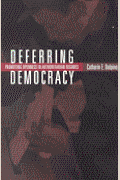
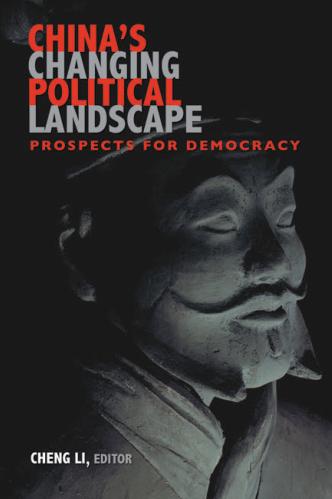
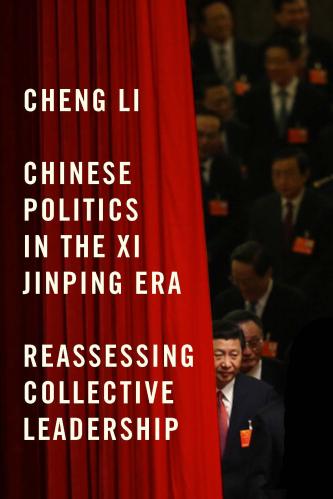
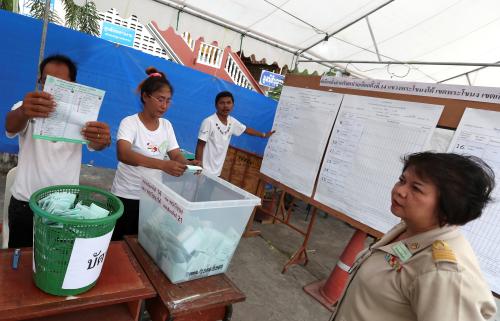
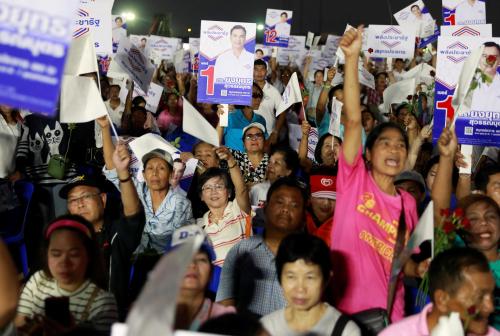
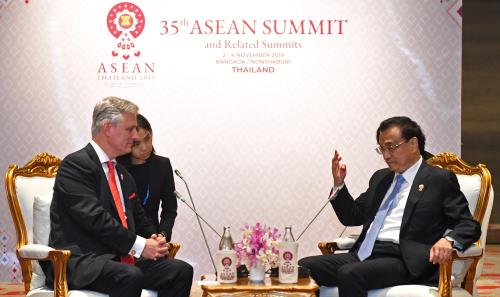
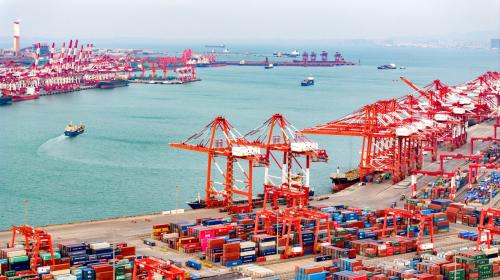
Commentary
Thailand’s national moment: Protests in a continuing battle over nationalism
November 2, 2020